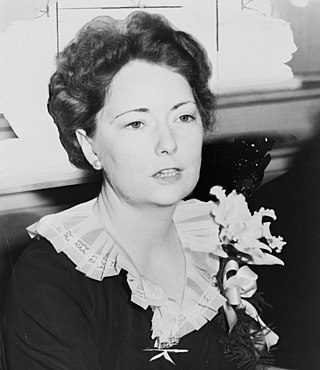
Margaret Munnerlyn Mitchell was an American novelist and journalist. Mitchell wrote only one novel that was published during her lifetime, the American Civil War-era novel Gone with the Wind, for which she won the National Book Award for Fiction for Most Distinguished Novel of 1936 and the Pulitzer Prize for Fiction in 1937. Long after her death, a collection of Mitchell's girlhood writings and a novella she wrote as a teenager, titled Lost Laysen, were published. A collection of newspaper articles written by Mitchell for The Atlanta Journal was republished in book form.
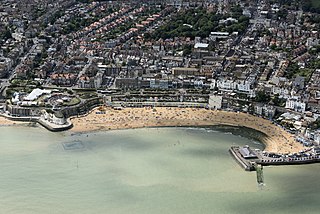
Broadstairs is a coastal town on the Isle of Thanet in the Thanet district of east Kent, England, about 80 miles (130 km) east of London. It is part of the civil parish of Broadstairs and St Peter's, which includes St Peter's, and had a population in 2011 of about 25,000. Situated between Margate and Ramsgate, Broadstairs is one of Thanet's seaside resorts, known as the "jewel in Thanet's crown". The town's coat of arms' Latin motto is Stella Maris. The name derives from a former flight of steps in the chalk cliff, which led from the sands up to the 11th-century shrine of St Mary on the cliff's summit.
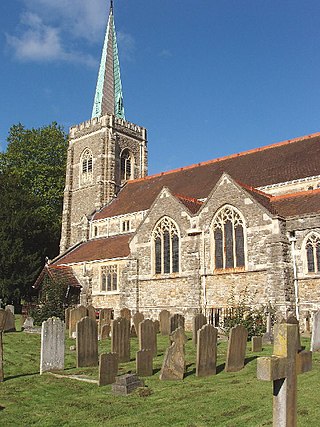
Taplow is a village and civil parish in the Unitary Authority of Buckinghamshire, England. It sits on the left bank of the River Thames, facing Maidenhead in the neighbouring county of Berkshire, with Cippenham and Burnham to the east. It is the south-westernmost settlement in Buckinghamshire.

Christians in Bangladesh account for 0.30% of the nation's population as of 2022 census. Together with Judaism and Buddhism, they account for 1% of the population. Islam accounts for 91.04% of the country's religion, followed by Hinduism at 7.95% as per 2022 census.

Broadstairs railway station is on the Chatham Main Line in England, serving the seaside town of Broadstairs, Kent. It is 77 miles 9 chains (124 km) down the line from London Victoria and is situated between Margate and Dumpton Park.

Clewer is an ecclesiastical parish and an area of Windsor, in the ceremonial county of Berkshire, England. Clewer makes up three wards of the Royal Borough of Windsor and Maidenhead, namely Clewer North, Clewer South and Clewer East.

Port Regis School is a co-educational preparatory school located in 140 acres of parkland on the Dorset-Wiltshire border in southern England, situated between the towns of Shaftesbury and Gillingham.

Merthyr Vale is a linear village and community in the Welsh county borough of Merthyr Tydfil. Lying on the A4054 road it is on the east bank of the River Taff.

Ripon College Cuddesdon (RCC) is a Church of England theological college in Cuddesdon, a village 5.5 miles (8.9 km) outside Oxford, England. The College trains men and women for ministry in the Church of England: stipendiary, non-stipendiary, local ordained and lay ministry, through a wide range of flexible full-time and part-time programmes.

The Community of St John Baptist (CSJB), also known as the Sisters of Mercy, or formerly Clewer Sisters, is an Anglican religious order of Augustinian nuns.

Broadstairs East Kent College is a further education college located in Broadstairs, Kent on the southeast coast of the United Kingdom.

The Church of St John the Baptist in Bristol, also known as St John on the Wall, is a historic church in the care of heritage charity the Churches Conservation Trust. The upper church and its medieval vaulted crypt is located at the lower end of Broad Street and is built into the old city's medieval walls.
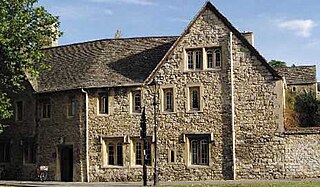
Holywell Manor is a historic building in central Oxford, England, in the parish of Holywell. It currently houses some of Balliol College's postgraduate student population. It is on the corner of Manor Road and St Cross Road, next to St Cross Church, which has become the Balliol College Historic Collections Centre.
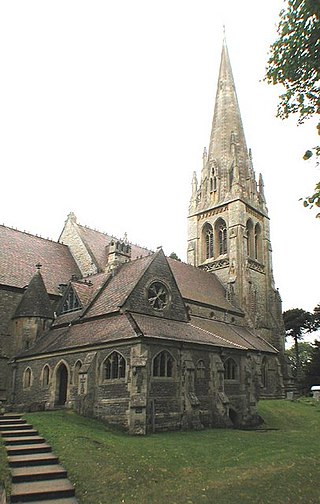
Henry Woodyer (1816–1896) was an English architect, a pupil of William Butterfield and a disciple of A. W. N. Pugin and the Ecclesiologists.
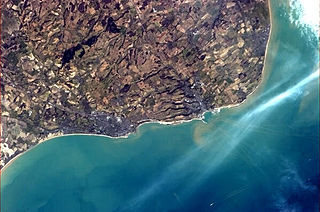
The history of Folkestone stretches back to ancient times, with evidence of human habitation dating to the Mesolithic and Paleolithic ages over 12,000 years ago. Its close proximity to the Continent means that it has often been a point of transit for migrating peoples. The area has successively been occupied by groups of Britons, Romans and Saxons. During the Iron Age, a large oppidum and quern-stone workshop were situated on the eastern headlands of the bay. By the Roman era, it had been transformed into a large Roman Villa overlooking the sea.

Folkestone East is a former railway station in Folkestone, England. Opened by the South Eastern Railway in 1843 as part of its main line from London, it was Folkestone's first station and handled substantial boat train traffic travelling to the Continent via Folkestone Harbour. Passenger traffic declined in later years with the opening of other more convenient stations in the town and the station eventually closed in 1965.

Harriet Monsell founded the Community of St John Baptist, an order of Augustinian nuns in the Church of England dedicated to social service, which by her death had expanded to numerous houses, including in India and the Americas. She is now remembered in the calendar of saints in some parts of the Anglican Communion on 26 March.
St Edmund's Catholic School is a co-educational Roman Catholic secondary school located in Dover, Kent, England. The school is named after Edmund of Abingdon, and is under the jurisdiction of the Roman Catholic Archdiocese of Southwark.

St John's Beaumont School is a private day and boarding Jesuit preparatory school, and is for boys and girls aged 3 to 13 years old. It is situated between Englefield Green and Old Windsor on Priest's Hill, with the school building in Surrey and the sports fields in Berkshire. It was opened in 1888, and it is the oldest purpose-built preparatory school in the UK. The building is Grade II listed and was designed by John Francis Bentley in Tudor style with a Perpendicular chapel, and it was named St John's, in honour of St John Berchmans, who was canonised that year.



















